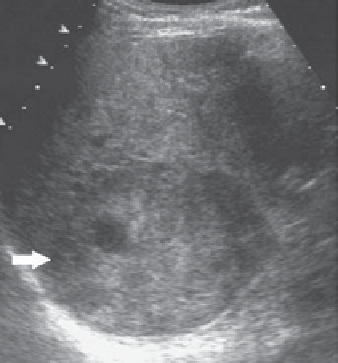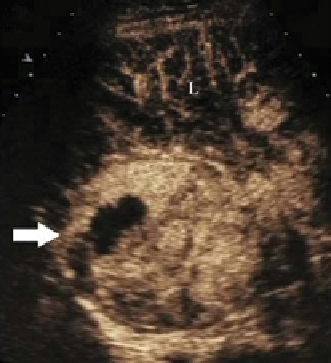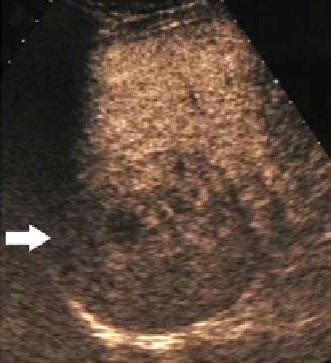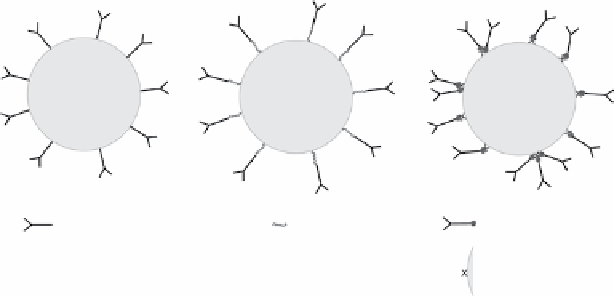Chemistry Reference
In-Depth Information
(a)
(b)
(c)
fIgure 14.3
Hepatocellular carcinoma (arrow) presents heterogeneous appearance at (a) conventional US imaging. In contrast-
enhanced US imaging, diffuse and heterogeneous contrast enhancement with hypervascular appearance (arrow) in comparison to the
adjacent liver at (b) arterial phase, (c) 30 s after microbubble injection. lesion appears hypovascular at (d) late phase, 120 s after micro-
bubble injection. (Reproduced from Ref. [15], with permission from Springer).
Linker
Antibody-biotin
Targeting moiety
(antibody, peptide,
polysaccharides, or
aptamers)
Streptavidin coated
particle surface
fIgure 14.4
Targeted microbubbles can be produced by different coupling strategies depending on the targeting moiety (e.g., anti-
bodies, peptides, polysaccharides, or aptamers).
Retention of targeted ligands and contrast agents leads to detection of molecular events through amplification effects [67].
Potential applications include detection of atherosclerotic plaques [68, 69], thrombi [70-74], inflammation [75-77], tumours,
[78] and angiogenesis [79].
14.3.4
as a therapeutic agent
local gene transfer and drug delivery have been another key area of application. Microbubble-mediated sonoporation can
dramatically increase cell permeability and intracellular uptake with no apparent tissue damage and toxicity [80, 81]. local
microbubble cavitation by spatially focused US can be applied in achieving site-specific release of incorporated drugs or
genes inside microbubbles [36, 82] (Figure 14.5).
Microbubble-mediated therapy has been used to deliver genes or drugs to specific tissues using microbubble cavitation
and sonoporation effects, including neural tissues, skeletal muscles, myocardium, kidneys, vessels, and tumours [83-86].
Development of the improved uptake of vascular endothelial growth factor using microbubble sonication may provide coro-
nary artery disease patients with new options such as therapeutic angiogenesis [87, 88].
Furthermore, the microbubble cavitation phenomenon has been put into practical use in achieving several therapeutic
interventions. Sonothrombolysis, which employs the local shock waves produced by microbubble cavitation to fragment
clots on a microscopic scale and restores blood flow, has been developed as a minimally invasive recanalisation technique in
treating vascular thrombosis [89, 90]. In addition, transient opening of the blood-brain barrier through microbubble-enhanced




